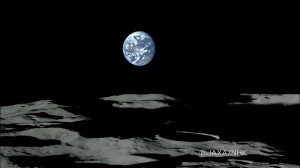What the Augustine Committee Didn’t Know in 1990
A newly formed commission led by Norman Augustine will review NASA’s human spaceflight program with the aim of determining if we are on the “right track.”

A newly formed commission led by Norman Augustine will review NASA’s human spaceflight program with the aim of determining if we are on the “right track.” This is familiar territory for Augustine, who led the 1990 Advisory Committee on the Future of the US Space Program. Now, 19 years later, it may seem that he’s treading across similar ground, but the landscape has changed.
Compiled in the wake of the Challenger accident, the first loss of an American crew in flight, the Commission was charged to consider 1) Should America have a human space program; and 2) if yes, what should be its goals? The 1990 report concluded that human spaceflight was an essential part of the program and that the long-term goal of human exploration is Mars, preceded by a LEO Space Station which emphasizes life-sciences and microgravity research, an exploration base on the Moon, and robotic precursors to the Moon and Mars (Recommendations 4-7). The view of the Moon in Augustine 1990 was to explore the Moon as a test-bed for future missions to Mars. The report emphasized that the lunar base was to be built such that it could be human-tended, but not require permanent staffing. Surface activities were worded carefully because as far as it was known in 1990, the Moon offered little or nothing to sustain a long-term human presence.
Sustainability on the Moon revolves around two principal issues: power and consumables. Destinations in space typically lack one or both of these vital commodities. That’s why we bring all our consumables ( air, water, rocket propellant and electrical power) with us. For some time now, we’ve been able to generate electrical power in space using solar arrays, but these have the drawback of being unusable during night and periods of eclipse.
The Moon was viewed as a barren desert. True, it has no atmosphere or flowing water. Lunar samples are exceedingly dry and contain no water-bearing minerals. Moreover, the Moon has a slow rotation rate (28 days), meaning that after a scorching 14 Earth days in sunlight, you freeze for 14 days of cold, no-solar-power nights. These properties led to a concept of operations that emphasized transient stays on the Moon, science exploration and use of the Moon as a test-bed for Mars.
However, in the intervening twenty years since that Augustine report, several robotic missions have changed the way we perceive the Moon. We found that the poles are very different from the rest of the Moon. The 1994 Clementine mission found large areas in permanent shadow near both poles; the sun never reaches the bottoms of craters here because Moon’s spin axis is almost perpendicular to the plane of Earth’s orbit around the Sun (the ecliptic). Such areas are extremely cold, possibly only a few tens of degrees above absolute zero. Water added to the Moon through bombardment by water-bearing meteorites and comets for billions of years could be retained in these dark areas. Additionally, we found areas in close proximity to these dark regions on mountain peaks rising above the local horizon that are nearly continuously illuminated by the Sun. In 1998, the Lunar Prospector mission found elevated amounts of hydrogen in the polar regions, consistent with the accumulation of excess volatiles (including water).
So what do these discoveries mean for lunar return? We now know that sustained human presence on the Moon is possible, largely because we’ve found a source of near-constant power (permanent sunlight) and a source of sustenance and rocket propellant (volatiles, including water). The robotic Clementine and Lunar Prospector missions showed us that the poles, almost completely unknown in 1990, are inviting oases on the lunar desert. There, we can extract hydrogen and oxygen to make air and water for life support and propellant to fuel rockets. The sunlit areas can generate near continuous electrical power, with regenerative fuel cells providing power for the short duration eclipse periods. Locally obtained power and consumables means that continuous human presence is possible, without the enormous expense or unproven technology of large nuclear reactors and the delivery of massive quantities of material from Earth.
The new Augustine committee should be made cognizant of these facts. The more we learn about the true nature of the Moon, the more the goal of learning to live there on a quasi-self sufficient basis appears feasible. This opens up wholly new areas of operations and commerce in space, undreamed of as little as twenty years ago. It has the potential to change the entire paradigm of spaceflight, from a narrow, government-run, science-oriented program, completely dependent upon the caprice Congressional largess to a self-sustaining, free-market program, in which NASA develops and demonstrates new technologies that open up spacefaring by many different passengers and payloads for a wide variety of purposes.
Much of the original 1990 Augustine report is directly applicable to today, including a gradual movement of humans beyond LEO and a “go-as-you-pay” paradigm for agency funding. By using the Moon, where expanded dimensions in exploration can be developed and tested, we will transform and enhance the business of spaceflight.
/https://tf-cmsv2-smithsonianmag-media.s3.amazonaws.com/accounts/headshot/blog_headshot_spudis-300x300.jpg)
/https://tf-cmsv2-smithsonianmag-media.s3.amazonaws.com/accounts/headshot/blog_headshot_spudis-300x300.jpg)